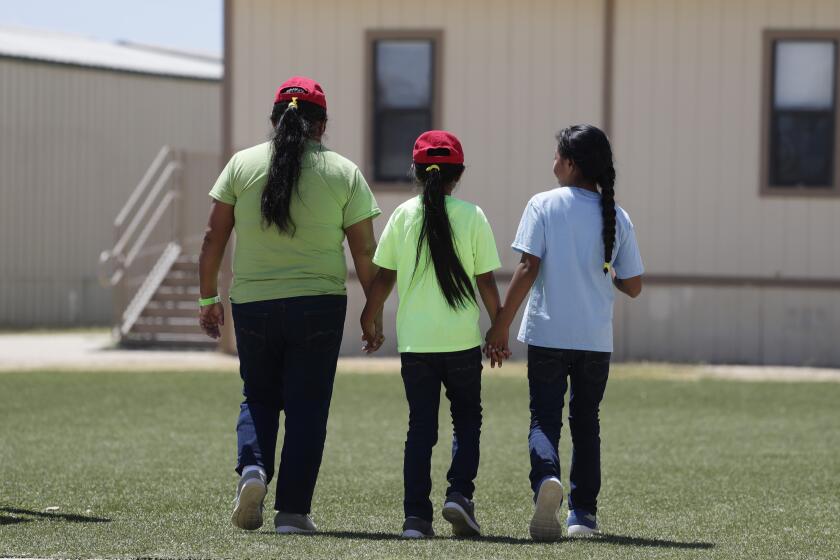Altadena’s Black population was shrinking even before the fires. What happens next?

- Share via
Good morning, and welcome to the Essential California newsletter. Here’s what you need to know to start your weekend:
You're reading the Essential California newsletter
Our reporters guide you through the most important news, features and recommendations of the day.
You may occasionally receive promotional content from the Los Angeles Times.
- Altadena’s Black community wonders what’s next.
- How to watch the 67th Grammys (and what else you need to know).
- These are our favorite ‘mental health escapes’ within driving distance of L.A.
- And here’s today’s e-newspaper
What’s next for Altadena’s Black residents?
Today marks the first day of Black History Month, an annual celebration that raises awareness of Black people’s achievements and contributions to society.
The monthlong celebration will hold even more meaning this year for residents in Altadena’s historically Black neighborhoods. On Jan. 7, the Eaton fire devastated the unincorporated town north of Pasadena, tearing through 9,000 structures and years of history. Of the 17 people who died in the fire, at least seven were Black.
Many of the families who lost homes in the fire had lived on properties passed down through generations. They sought refuge in Altadena from racial redlining, my colleagues reported.
An imperfect paradise for Black Altadenans
Altadena, population nearly 42,000, is the town where the Rev. Martin Luther King Jr. once visited lawyer Clarence B. Jones to persuade him to join his legal team. Where sci-fi author Octavia E. Butler is buried alongside abolitionists, and where a park is named after artist Charles White whose work portrayed Black history.

As my colleague Brittny Mejia reported, Black residents found fewer housing restrictions there and neighbors were generally more welcoming than those in other cities and towns — allowing them to thrive. That was especially true of West Altadena, an area that got an evacuation order many hours after the Eaton fire exploded last month.
According to a UCLA study published earlier this week, Black residents in Altadena were more likely to have their homes damaged or destroyed by the Eaton fire and will have a harder financial road to recovery from the disaster. The study also found that 61% of Black households in the community are in the fire’s perimeter, compared with 50% of non-Black households.
Altadena’s Black community had been shrinking even before the fire
Altadena’s Black population has dropped to 18%, down from 43% in 1980. Experts attribute this to gentrification.
The median home value in Altadena from 2019 to 2023 was more than $1 million and roughly a third higher than homes elsewhere in the county, according to the UCLA study. The rising cost resulted in a decline in new Black homeownership in the community even before the fire.
And now, the study cautions, the younger Black community — already struggling to purchase a home there — will likely face more hurdles.
Many Black Altadenans can’t afford to rebuild
As Hendrena Martin dug through the ruins of the home her father had built more than 60 years ago, she wondered if she could afford to rebuild.
“How can a whole city just go up in flames in one night, and you lose everything that you struggled to hold on to?” she told my colleague Colleen Shalby.

Martin’s insurance premium under the California FAIR Plan more than doubled last year to nearly $1,700. But even with that payment, she learned after the fire that her property was underinsured.
The Eaton fire also leveled the family home of Nailah Tatum. Her grandfather Olsen J. Rogers purchased it in 1963.
Birthday presents for Tatum were among the items lost within the rubble of their fire-ravaged home. But those could be replaced. As Brittny reported, what hurt most was losing the memoirs that belonged to Tatum’s grandparents; the photos she was restoring for her relatives and the toys and baby shoes that belonged to her older brother who died of cancer.
“You just can’t get those things back,” Tatum told Brittny.
“Altadena Is Not For Sale” signs have popped up throughout neighborhoods as fears grow over who might try to buy the land if residents can’t afford to stay. Some have found business cards from real estate developers on their property.
Tatum’s family plans to rebuild in Altadena, but she said they worry about developers buying out other Black residents. “I’m nervous there’s not going to be a Black community in Altadena anymore.”
The week’s biggest stories

Southern California is in for a lot more rain
- Two atmospheric river storms are expected to hit California — potentially bringing much-needed moisture to the still-withered Southland while packing a more powerful and prolonged punch up north.
- Forecasters believe there’s little risk that the rains expected next week will trigger destructive debris flows and mudslides in Southern California’s recent burn areas.
- But the risk is still there, and there is a range of possibilities for how much rain will ultimately fall.
Trump’s executive orders continued this week
- He has issued an executive order promoting a crackdown on campus antisemitism and said he supports canceling visas of pro-Palestinian international students. The order has put California university leaders and activists on alert.
- Even national parks are on the chopping block as the seasonal workers who staff 433 national parks and historical sites began receiving emails saying their job offers for the 2025 season had been “rescinded,” with little further explanation.
- Is the president pushing his presidential powers beyond what the Constitution allows?
The 67th Grammy Awards airs on Sunday
- Ahead of Sunday’s awards show, here’s a ranked list of all 66 songs that have won record of the year since the Recording Academy’s first ceremony in 1959.
- Who will win and who should win? Here are our predictions for how the night will go down across 11 major categories.
- Here’s how to watch (and what else you need to know).
More big stories
- Senators challenge Robert Kennedy Jr. on vaccines in confirmation hearing as health secretary.
- Trump’s orders have upended U.S. immigration. What legal routes remain?
- California’s monarch butterfly population plummets; fire wipes out Topanga habitat.
- San Bernardino children were among those coerced by neo-Nazis into producing child pornography, feds say.
- L.A. County had extra firefighters ready. How many were near Altadena?
- Big Ass Fans were slapped with fat fines for false claims about their clean air products.
- Why Chinese AI company DeepSeek is spooking investors on U.S. tech.
- Here’s looking at shrew: How college students got first-ever photos of an elusive California mammal.
- For the second time, the Big Bear Valley bald eagle power couple of Jackie and Shadow has a second chance at triplets.
- Prosecutors list two new victims, say Sean ‘Diddy’ Combs dangled a woman off balcony.
- These 24 Angeles National Forest trails and campgrounds are closed following the Eaton fire.
Get unlimited access to the Los Angeles Times. Subscribe here.
This week’s must reads
Another unwelcome consequence of climate change: an explosion of urban rats. If scorching heat waves, destructive storms, prolonged droughts and rising seas aren’t enough to make some folks fear the consequences of climate change, perhaps this will do the trick: The warmer it gets, the faster rats multiply in cities that already struggle to contain them.
More great reads
- Schools opening near fire zones are safe, district officials say. Parents aren’t so sure.
- Trump has vowed to pump more water. Government data show pumping was down for maintenance.
- Japanese Americans returned from prison camps 80 years ago to face one of the country’s ‘greatest swindles.’
How can we make this newsletter more useful? Send comments to [email protected].
For your weekend

Going out
- 🍜‘Is it gonna be busy?’ Woon Pasadena opens in the wake of the Eaton fire.
- 🏜️These are our favorite ‘mental health escapes’ within driving distance of L.A.
Staying in
- 🪖‘Vietnam: The War That Changed America’ — now streaming on Apple TV+— examines the human stories of war.
- 🧑🍳 Here’s a recipe for Little Fish and Chainsaw’s chicken and leek congee.
- ✏️ Get our free daily crossword puzzle, sudoku, word search and arcade games.
How well did you follow the news this week? Take our quiz.

What airline recently banned see-through clothing and ‘lewd’ body art? Plus nine other questions from our weekly news quiz.
Have a great weekend, from the Essential California team
Kevinisha Walker, multiplatform editor
Karim Doumar, head of newsletters
Check our top stories, topics and the latest articles on latimes.com.
Sign up for Essential California
The most important California stories and recommendations in your inbox every morning.
You may occasionally receive promotional content from the Los Angeles Times.





